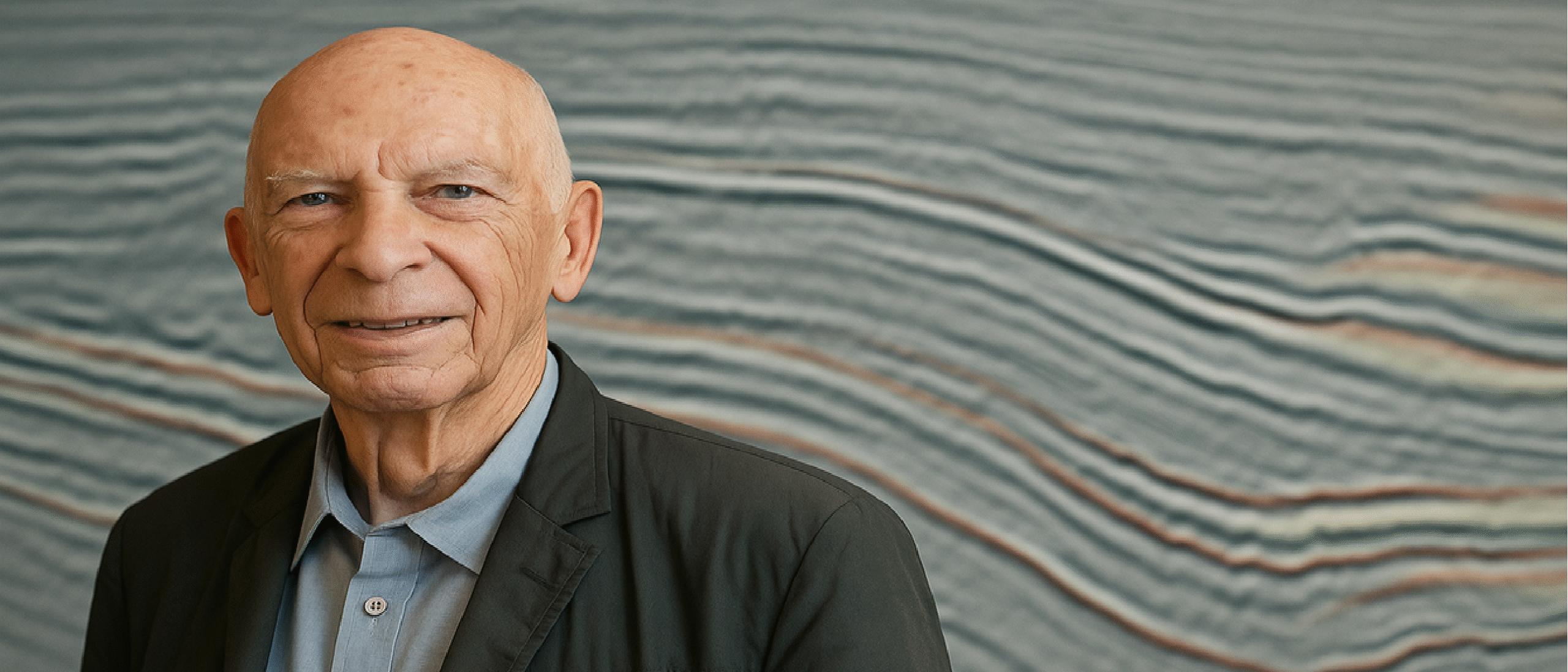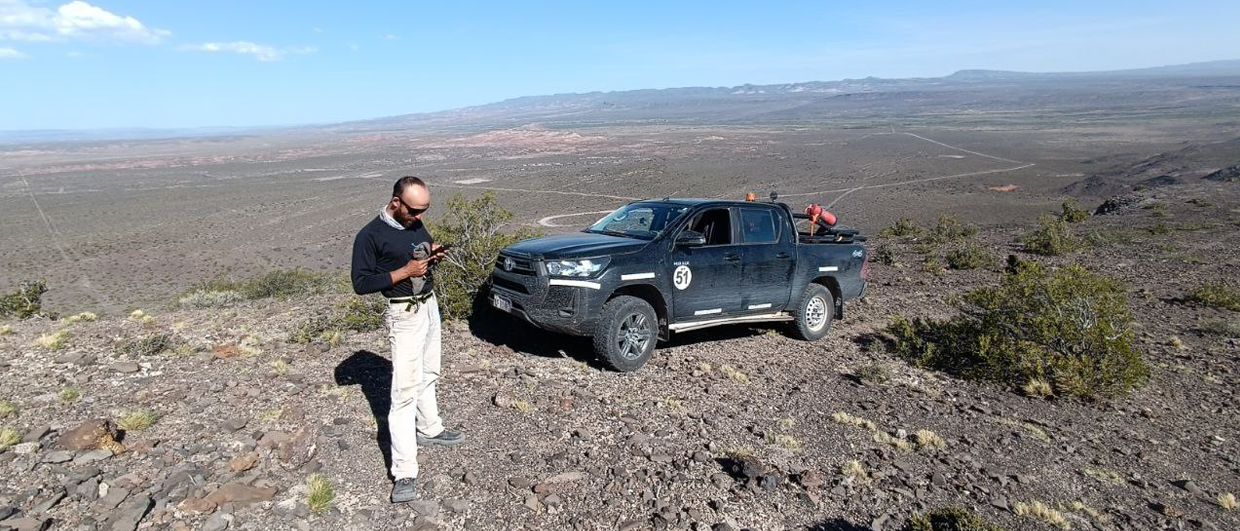Identifying large scale seeps of hydrocarbons at the sea surface has become a commonly used tool for proving the existence of offshore hydrocarbon accumulations in a basin. A number of companies have developed methods using satellite and other remote sensing imagery to identify seeps which have leaked out of the rock, through the water and appear at the sea surface, and can be subsequently sampled and analyzed using slick sampling tools. Macroseepage is used at a very early stage in the exploration cycle, where the existence of seeps at the sea surface and their change over time in an unexplored area gives much needed evidence of a petroleum system.
In addition to these large seeps, minor seeps too small to be detected by satellites or the naked eye can also be used in hydrocarbon exploration, as David Goold of Gore Surveys, explains. “Our Amplified Geochemical ImagingSM technology is used in frontier settings or after initial seismic surveys have identified a number of potential leads and prospects. It samples, measures and maps 86 different targeted geochemical compounds at the surface, both on land and under water, and has a 90% accuracy in detecting hydrocarbons. This has proved to be an accurate and reliable way to de-risk a prospect prior to drilling.”
Microseepage Offshore
 Remote sensing imagery can be used to identify seeps which have leached out of the rock and appeared at the sea surface. This image shows a slick visible on an ers-1 SAR image clearly distinguishable as a dark area against the rougher sea surface. The outlines of repeat slicks identified between 1997 and 2006 are shown streaming from the same source point. Image: InfoterraIn an offshore environment, samples to be tested using this tool are collected using a simple drop core, with a sample grid designed to cover not just the prospect area but also outside it, in order to obtain a valid comparison with background unproductive areas. “Samples are put directly into one of our specially designed sealed jars, which contain a polymeric mixture of specifically engineered adsorbents,” explains David. “They are left at ambient temperature and pressure for about three weeks, during which time the hydrocarbons attach themselves to the stronger engineered adsorbents. As the system is closed, nothing escapes, and because this is happening over a relatively long period of time, even the heavier compounds, well into the oil range, are adsorbed.”
Remote sensing imagery can be used to identify seeps which have leached out of the rock and appeared at the sea surface. This image shows a slick visible on an ers-1 SAR image clearly distinguishable as a dark area against the rougher sea surface. The outlines of repeat slicks identified between 1997 and 2006 are shown streaming from the same source point. Image: InfoterraIn an offshore environment, samples to be tested using this tool are collected using a simple drop core, with a sample grid designed to cover not just the prospect area but also outside it, in order to obtain a valid comparison with background unproductive areas. “Samples are put directly into one of our specially designed sealed jars, which contain a polymeric mixture of specifically engineered adsorbents,” explains David. “They are left at ambient temperature and pressure for about three weeks, during which time the hydrocarbons attach themselves to the stronger engineered adsorbents. As the system is closed, nothing escapes, and because this is happening over a relatively long period of time, even the heavier compounds, well into the oil range, are adsorbed.”
The samples are eventually opened in a clean laboratory environment, where the compounds are analysed using highly sensitive precision techniques such as gas chromatography and mass spectrometry. These instruments are able to identify and measure in nanograms (billionths of a gram) 86 different compounds, whereas previous methodologies worked with only four or five, allowing for more data with much greater resolution and sensitivity.
“This technique produces a much richer data set,” says David. “This gives our clients more information, and enables them to undertake a wide range of statistical analyses on key marker compounds using modelling and pattern recognition software. They can, for example, produce maps showing low and high probability of hydrocarbons, and feed the results into standard industry software such as Kingdom or Landmark to compare and integrate with other G&G data.” Furthermore, they can distinguish petroleum types: gas, condensate, or oil.
Versatile system
 Using a simple over-the-side lure, sea surface slicks identified from remote sensing can also be easily sampled and tested during a survey, using Gore´s Slick Sampling technology. Other than the microseepage application, the slick sampling uses the hydrocarbon fluid to deliver compound specific data from C5 in to C35 including vital biomarkers. Photo: Gore Surveys“One of the more remarkable aspects of this microseep sampling system is its versatility,” David continues. “It can be used with equal effect both on and offshore; in swamps or the transition zone, shallow or deepwater; in hot or cold climates. In onshore application, it works in a huge range of soils, from water saturated to permafrost, as well as in or above thick salt or volcanic layers. The equipment is light and easy to use and the technique has no negative environmental impacts, so it can be deployed in populated regions or access-limited areas like nature reserves. In shallow water zones sensors can be placed directly in or on the seabed to passively collect microseepage.”
Using a simple over-the-side lure, sea surface slicks identified from remote sensing can also be easily sampled and tested during a survey, using Gore´s Slick Sampling technology. Other than the microseepage application, the slick sampling uses the hydrocarbon fluid to deliver compound specific data from C5 in to C35 including vital biomarkers. Photo: Gore Surveys“One of the more remarkable aspects of this microseep sampling system is its versatility,” David continues. “It can be used with equal effect both on and offshore; in swamps or the transition zone, shallow or deepwater; in hot or cold climates. In onshore application, it works in a huge range of soils, from water saturated to permafrost, as well as in or above thick salt or volcanic layers. The equipment is light and easy to use and the technique has no negative environmental impacts, so it can be deployed in populated regions or access-limited areas like nature reserves. In shallow water zones sensors can be placed directly in or on the seabed to passively collect microseepage.”
The statistics are impressive. Amplified Geochemical ImagingSM has been successfully used by about 200 oil companies on 600 projects in 65 countries throughout the world, and in 130 different basins. For the wells that Gore know to have been drilled after using the technique, it has been shown to have an over 90% success rate for predicting hydrocarbons.
“In 2006 the oil company RWE undertook a ‘blind test’ on this technique,” David says. “We were given about 15 archived samples and were asked to identify what a well drilled at the spot from which the samples were taken would have found. In each case we successfully identified the background and predicted whether the area would contain hydrocarbons and also distinguished between gas, condensate, or light or heavy oils. Our results were 100% accurate!”
“Capturing information in microseepage data using Gore’s Amplified Geochemical ImagingSM technology is a very effective way of identifying hydrocarbons seeping vertically up from charged reservoirs,” David concludes. “They are Direct Hydrocarbon Indicators; in fact, we would like to suggest that while macroseeps show a presence of hydrocarbons in the basin, they may travel long distances from the actual reservoir. Microseeps travel vertically from the reservoirs and thus are the only real DHI!”





